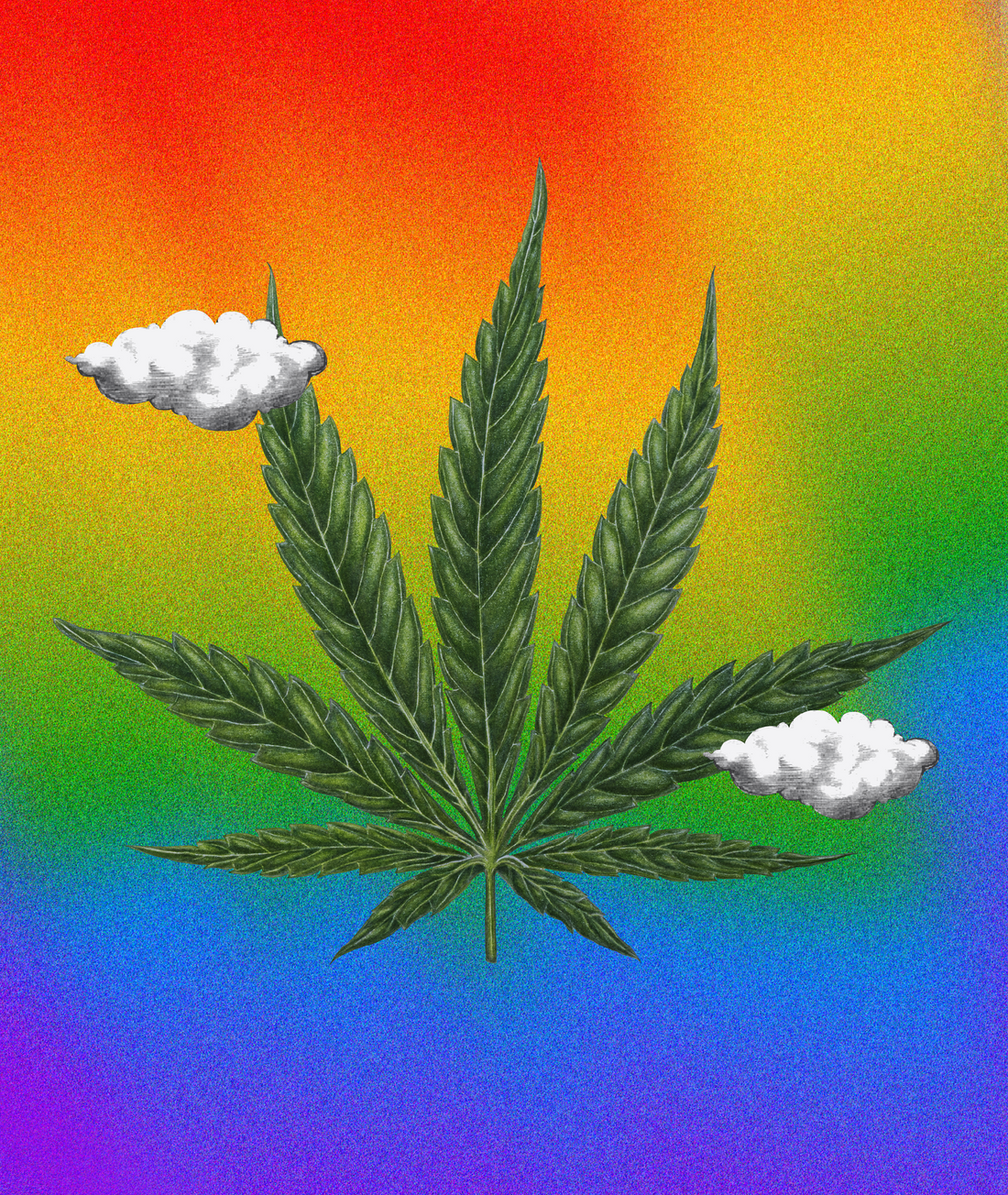Written By Cole Blackett
Long before dispensaries and Pride parades, queer activists were fighting for access—to health care, to dignity and yes, to cannabis. Over the last century, quiet acts of resistance have grown into a powerful tool for survival and change. At Verist, we definitely didn’t start this story, but we’re here to honor it—and keep it growing. That’s why we’ve been celebrating Pride month by looking at key intersections of cannabis and queer activism that shaped a greener, more inclusive future.

David Aiken
1960s | Hippies and Radical Queers
Our story begins in the 1960s, a decade of change. Leading up to the ‘60s, there were legal and social restrictions on the use of cannabis and the rights of gay people. The Marihuana Tax Act of 1937 illegalized recreational usage and possession of hemp in the United States. Homosexual activity was illegal in all states, sometimes punishable by life in prison. At the time, the country’s laws severely limited personal freedom.
The Civil Rights Movement achieved social progress that inspired marginalized people in the country. Americans who didn’t fit the mold of the nuclear family model of the ‘50s had a chance to fight for their place.
Enter the hippies: a group of pro-peace advocates who held progressive worldviews and defined an era with their clothing, music and use of marijuana. The peak of the hippie movement was Woodstock, a 1969 music festival that drew an estimated 500,000 people to listen to music, dance, smoke pot and protest the Vietnam War. The popularity of the festival—and the hippie movement overall—began to normalize the use of marijuana in the mainstream.
That same summer, the gay rights movement was also gaining momentum in New York City. Police would regularly raid gay bars and arrest patrons—a practice that was both violent and dehumanizing. On June 26, 1969, one of those raids sparked something bigger: the Stonewall Riots, a defiant uprising led in part by trailblazer Marsha P. Johnson, a Black trans woman and queer housing advocate. That night is widely recognized as a turning point in the fight for LGBTQ+ liberation—and the reason we celebrate Pride each June.

AP
1970s | Counterculture
The 1970s saw war, capitalism and class divisions continue to divide America, leading to the rise of the counterculture movement: a rejection of the mainstream. Cannabis legislation and gay rights—both seen as “out-there” and “radical” during this time—found solidarity under counterculture. As documentarian Darnell Lamont Walker put it, “When you're marginalized, there are no 'them people,' if we're all on the outskirts of the same margin."

The New York Historical Society
1980s | AIDS and the War on Drugs
The 1980s ushered in the War on Drugs, with bills being passed to criminalize possession and sale of drugs like cannabis. These laws disproportionately affected marginalized communities. But for many in the queer community, cannabis was never just a plant; it was a protest, a practice of care and a public stand. During a time when the AIDS epidemic further stigmatized gay men, queer activism stepped up and thrived. Despite cannabis being classified as a Schedule I drug—prohibited even for medical use—grassroots networks quietly grew, shared and distributed it to those living with HIV/AIDS. Cannabis eased pain, restored appetite and offered a sense of peace in the face of devastation. These quiet, meaningful acts of rebellion helped care for a community when their country wouldn’t.

Joey Tranchina
1990s | Loss Leads to Legislation
As the 1990s began, the AIDS crisis was still devastating the gay community. Morale was low, but hope was not lost. Courageous leaders were fighting to keep the movement not only alive, but disruptive and impossible to dismiss.
Dennis Peron, a San Francisco activist, was arrested for cannabis possession while caring for his partner, Jonathan West, an AIDS patient. This struggle fueled Peron to establish California’s first cannabis dispensary, the San Francisco Buyer’s Club. Peron advocated for legislation to legalize medical marijuana and eventually co-authored Proposition 215, making California the first state to legalize medical marijuana—a breakthrough moment in both cannabis and queer activism.
The Fight Continues
To celebrate Pride at Verist, we’re taking time to recognize the history of activism that we benefit from. Thanks to queer advocacy, cannabis use is more socially acceptable than ever, with an inclusive and genuine conversation taking place across the country. Queer activism and cannabis activism didn’t just intersect; they grew together. A popular saying from the AIDS crisis sums it up: “Bury your friends in the morning, protest in the afternoon, and dance all night.” That spirit helped change laws and lives. The work isn’t over. But this Pride, we honor the queer elders who made this world more livable for all of us.
//
Sources:
https://elevate-holistics.com/blog/the-history-between-pride-and-cannabis/
https://www.celebstoner.com/blogs/steve-bloom/2018/01/29/remembering-dennis-peron/
https://midoselife.com/blog/2023/6/12/a-queer-history-of-cannabis

